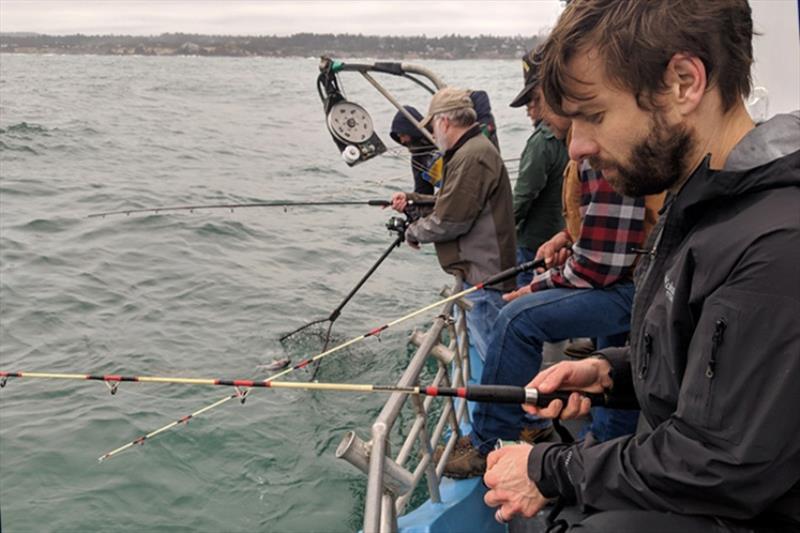
Pacific Coast plan identifies ways to improve regional recreational fishing data collection efforts
by NOAA Fisheries 10 Feb 2020 16:18 UTC

Pacific Coast plan identifies ways to improve regional recreational fishing data collection efforts © Chris Matthews / Pacific States Marine Fisheries Commission
The Pacific Coast Recreational Fisheries Information Network (Pacific RecFIN) has completed its Marine Recreational Information Program Regional Implementation Plan.
These plans represent a significant shift for the program. They clearly establish that regional partners will have a direct role in determining which survey methods are most suitable for their science, stock assessment, and management needs.
The plan (PDF, 30 pages) was created in response to Pacific Coast regional needs to enhance data for regional fishery management and science.
Prioritized Activities
The Pacific RecFIN identified the following seven prioritized needs:
1. Maintain and restore base level funding for sampling saltwater recreational anglers and for-hire operators.
2. Implement and support enhanced electronic data collection.
3. Expand on-board sampling of commercial passenger fishing vessels or recreational charter boats.
4. Explore new, high tech hardware and software to improve current, round-the-clock monitoring of recreational fishing vessels as they exit harbors to fish the ocean.
5. Stratify party charter sampling by trip type and sampling period for Southern California highly migratory fisheries.
6. Provide improved access to the Marine Recreational Fisheries Statistics Survey database.
7. State calibration of historical catch.
Development of the Pacific RecFIN Plan
Pacific RecFIN is a program of the Pacific States Marine Fisheries Commission. The RecFIN Steering Committee is comprised of representatives from the Pacific States Marine Fisheries Commission, Pacific Fishery Management Council, California Department of Fish and Wildlife, Oregon Department of Fish and Wildlife, and Washington Department of Fish and Wildlife. They produced the plan with staff support from MRIP. The committee will update priorities every year, or maintain them as necessary, and will also update the Regional Implementation Plan every five years.
Established in 1992, Pacific RecFIN was designed to integrate state and federal marine recreational fishery sampling efforts into a single database. It provides important biological, social, and economic data for Pacific coast recreational fishery biologists, managers and anglers. The Commission promotes the conservation and management of the Pacific states' shared near-shore fishery resources—marine, shell, and anadromous—for sustainable use.
Inaugural Regional Implementation Plans
We will use these inaugural plans to develop a national inventory of partner needs and associated costs. They will also be used annually to specify priority-setting criteria for supporting those funding and/or technical needs.These plans:
- Provide an analysis of existing programs
- Detail priorities for coverage, resolution, precision, and timeliness
- Identify strategies for implementing improved methods
- Outline processes for integrating data from different sources
- Include budget estimates
Each plan has been submitted for a comprehensive review and approval process by our Executive Steering Committee.
From a national perspective, these plans will help guide our decision-making regarding ongoing research priorities and implementation budget allocation. They will be adjusted as necessary based on changing science and management needs and budget availability. They will be formally updated every five years.
Applying this collaborative approach to the development and launch of the Regional Implementation Plans is critical to improving recreational fishing data collection efforts and supporting quality fishing opportunities for future generations.
Regional Implementation Plans